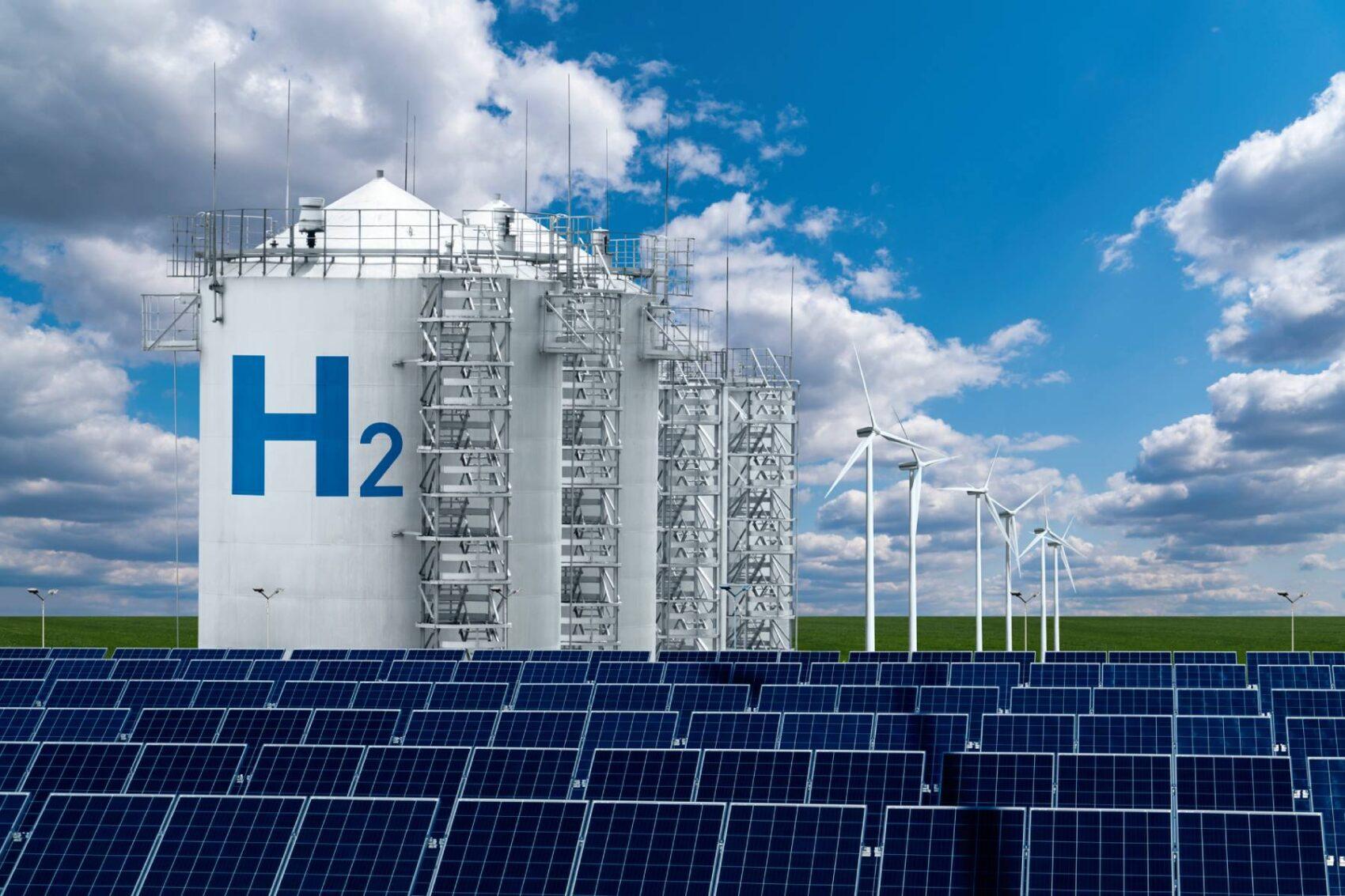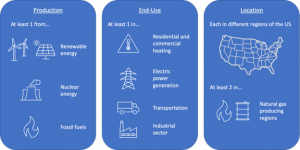Funding Our Future: Clean Hydrogen Hub Offers Major Opportunity — If We Do It Right
- Author(s): Courtney Bourgoin, Alexa Thompson, Alexandra Wall, Tessa Weiss

Hydrogen’s Role in the Energy Transition
Among clean energy enthusiasts, you’ll hear dramatically different opinions on the topic of “clean hydrogen” as a climate solution. On one hand, hydrogen produced from natural gas can create anxiety about increasing fossil fuel use and greenhouse gas emissions. On the other, hydrogen has major benefits, such as minimal emissions when produced through electrolysis with renewable electricity, declining costs of the technology, and a major diversity of uses in some of the heaviest-polluting industries — which makes it especially appealing in this decisive decade for slashing climate pollution.
Right now, hydrogen production has a mixed report card in terms of its emissions output. Making the dirtiest hydrogen is equivalent to burning coal, while at its cleanest, it is nearly carbon-free. Hydrogen’s role as part of the climate solution hinges on choices of how it’s produced and used — choices that the US Department of Energy (DOE) is making right now.

This week, the DOE will open its competitive process for interested investors — like states, companies, and cities — to apply for a piece of the $8 billion Congress has invested in hydrogen “hubs” in the 2021 bipartisan infrastructure legislation. These “H2Hubs” (DOE’s shorthand for the program) will bring together a network of clean hydrogen producers, consumers, and connective infrastructure to deliver projects that facilitate the demonstration, development, and commercialization of the nation’s clean hydrogen economy. What’s exciting and critical is that hydrogen can be used in nearly every energy-intensive application — and RMI believes it should be prioritized for heavy, hard-to-electrify industries like steelmaking, shipping, trucking, and aviation.
What’s Next for These Hubs
Right now, we are in an opportune moment to shape the future of America’s clean hydrogen economy, including what it means for hydrogen to truly be clean. As part of this competitive funding application process, DOE will likely set clearer guidelines on how hydrogen should be made by producers and used in industry. These guidelines are expected to focus on a carbon intensity standard for hydrogen production, as well as project merit criteria for the hubs.
As it stands, the definition of “clean” hydrogen provided in the infrastructure legislation is woefully inadequate. Because the current definition excludes off-site emissions —such as pollution from methane leaks in the gas supply chain or electricity generation — funding intended for “clean” hydrogen could end up paying for hydrogen with a large carbon footprint. The current definition leaves out much of the true emissions currently created by some forms of hydrogen production; a more comprehensive and realistic definition could account for 2 to 10 times greater emissions.
A better path forward is possible, and it could be a major opportunity for the American economy. Adopting a carbon intensity standard for clean hydrogen that looks further than emissions produced “at the site of production” is crucial. Ideally, in the near term, the standard would reduce the carbon intensity of the full production life cycle by at least 80 percent as compared with today’s main hydrogen production method, which depends on methane.
Prioritizing investments and incentives to ramp up hydrogen with near-zero emissions will ensure that hydrogen is produced in a way that helps us fight climate change by truly achieving a net-zero energy system. “Green” hydrogen — produced from electrolysis with zero-carbon power — produces no operational emissions and is projected to outcompete fossil-derived “blue” hydrogen on cost in almost every country by 2030. Still, blue hydrogen — produced from methane gas, but capturing the resulting emissions — could also be a contender if it achieves very high carbon capture rates and controls methane leaks from gas wells and pipelines.
Setting the Standard
Importantly, adopting a stringent clean hydrogen standard — in line with emerging international standards and voluntary commitments — will ensure that the United States is not isolated from global trade opportunities. Emerging global markets for green steel and green shipping may exclude US products made with high-carbon hydrogen — a risk the United States should avoid by getting its domestic hydrogen standard right from the outset. An innovative and competitive market for clean hydrogen is already growing rapidly in Europe, Japan, and China — and plenty of customers are demanding “green” or “net-zero” industrial products here in the United States, too.
Clean hydrogen could be a game changer for the US energy system — boosting our role as a climate and economic leader internationally and making our critical domestic industries more resilient for the future. To name just a few promising applications, hydrogen can be used to replace coal used in steelmaking, diesel fuel for trucks, and oil used in maritime shipping. It can also be used to make fertilizer for farmers.
Hydrogen’s expansive range in terms of geographic reach, end-use potential, and ability to decarbonize our hardest-to-abate heavy industries could make it a clean energy gold mine. But building the foundations of a truly clean hydrogen economy means being honest about hydrogen’s complicated status as a decarbonization tool, and being strategic about its role in our future.
Hydrogen must be produced with low to no emissions — and there has never been a better time to do that work than right now. The DOE can send a bold investment signal by putting in place a strong clean hydrogen standard, and by outlining criteria for its hydrogen hubs program that incentivize projects with the lowest possible production emissions and highest-value end uses.
- Source Website: https://rmi.org/clean-hydrogen-hub-offers-major-opportunity/

